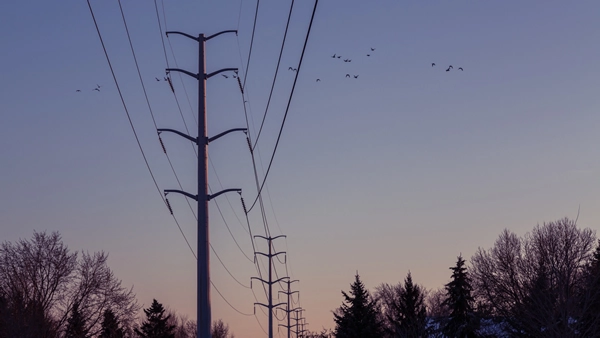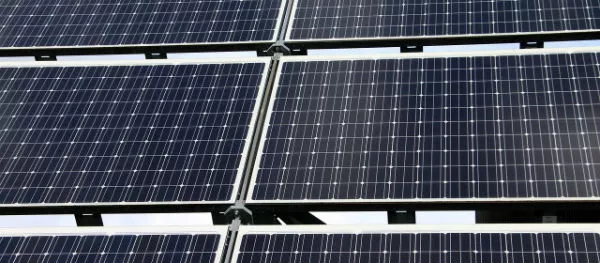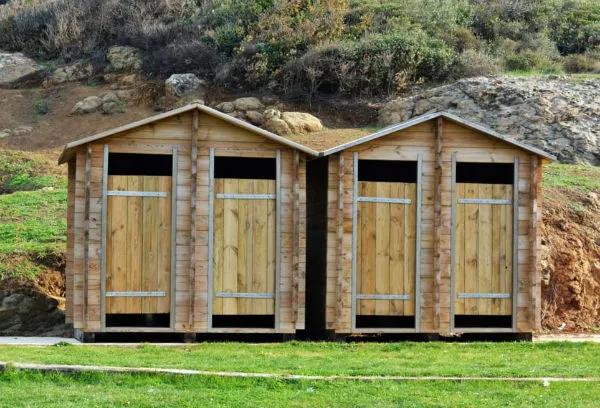Most tiny houses get their utilities the same way RV’s and conventional homes do. Through services provided by utility and power companies. However, occasionally people wish to locate their homes where these services are not provided. In these cases, their house needs to be 'off-grid', meaning the individual is responsible for providing their own services. Sometimes a house uses a combination of both grid and off-grid services. For instance, if grid power and water services are available, but sewer is not.
Standard Hook-ups
Standard hook-ups or utilities are usually available at RV parks or existing homes. For instance, if you plan to park your tiny house in someone’s backyard, you should be able to use what the primary house is already using. If available, standard hook-ups are the easiest route to take because it’s what most of us are already used to. Flushing toilets and endless reliable power and water whenever needed has become a given for most. But that’s not to say they are perfect. The environmental impact and reliance on others have driven some to look for alternatives. However, if you are looking for the path of least resistance, you’ll want to find a location for your house that offers standard hook-ups.
Water
For water, you need nothing more than a spigot and a hose. I know what you are thinking: "That water tastes horrible!" Well the problem is the hose, not the water. If you use a RV white hose you will find that your water tastes exactly the same as tap water at your kitchen sink. Many people choose to have a filter in their tiny house as well.
Power

Most tiny houses get their power the same way that RV’s do, through an extension cord. This extension cord is sized differently depending on the power requirements and hookups of your house. If your house is smaller and only requires 20 amps service, you will be able to plug your house directly into an existing outlet. If it requires 30 amps or 50 amps service, you’ll likely need to contact an electrician to add a suitable plug near your house. If you are parking in an RV park, most parks have spaces with all three power hookups; 20 amps, 30 amps, and 50 amps.
It’s important to note that RV parks don’t provide 220 volt hookups (regardless of the amperage, they are all 110). 220 volts are used in a conventional home to power larger appliances like ovens and clothes dryers. While they don’t work quite as well, there are 110 volt equivalents to these power hungry appliances. In order to have the most options for where you can connect your tiny house, we recommend against installing anything that requires 220 volts.
Sewer
If the property that you are keeping your house on is hooked up to city sewer or has a septic tank, you can splice into the existing sewer. Just make sure the connection between the house and the sewer line can be removed like with an RV. This semi-permanent connection is often desired not only by the owners but by many legislatures that need you to verify that the house is truly "mobile."
Internet and Cable
It doesn’t get much easier than this: Standard cable provided by a service provider. If you are at a private campground or RV park, most have a cable hookup as well.
Off-Grid Hook-ups
These hook-ups are what you would use if your house was located where no utilities are provided, for instance in a remote location or undeveloped land. Keep in mind that "going green costs green." These options may look money saving, but most have a pretty high up front price tag to consider.
Water
To get fresh water while off-grid the options typically include drilling a well, bringing water in from an external source, or collecting rainwater. The first two are self-explanatory so we will focus on the third.
Collection
To collect rainwater, you need a catchment area to collect water from, for instance a roof. The catchment area of a tiny house roof alone is probably not large enough to provide enough water for all its occupants year-round. So, you will likely need to either increase the square footage of the roof by adding another structure like a carport, or by supplementing the collected water from an external source.
To determine how much water you can harvest, use the following formula from the Tiny House Design and Construction Guide:

This formula should be calculated for each month since average rainfall will vary from month to month. The US Climate Data can give you an idea of how much rainfall you will have where you live. Now let us figure out how much you are typically going to need? When calculating the amount of water you will need, be sure to consider all or your activities that use water. Below are a few of the common activities and their typical consumption. Again, from the Tiny House Design and Construction Guide:

Assuming your usage is 15 gallons per day and the dimensions of your tiny house are 8 feet by 24 feet, then you would require approximately 4 inches of rainfall each month. Depending on where you live, you may or may not receive enough to get by.
Filtering
Rainwater will need to be filtered before it is stored. While drinking water that is exposed to the elements may be off-putting to some, it is important to remember that most cities drinking water comes from open air lakes and reservoirs. There are many ‘whole home’ filtering systems out there that will ensure your water is cleaner than almost any city water.
Storage
Another thing to consider is how large of a cistern you will need to hold your water. If you live in a location that has just a few rainy months, you will need to collect a large amount of that rainfall to last you though the dryer months. However, if the rain falls more evenly throughout the year, a smaller container can work.
The water entering your house will need to be under pressure for it to be forced into your home and out of your faucets. In on-grid utilities, this pressure is normally created by elevating the water in water towers and letting gravity do the work. In off-grid setups, the same thing can be achieved by creating your own elevated tanks. Just make sure the tanks are higher than the highest outlet in your house, likely your shower head. If you do not want to build an elevated tank or plan to move frequently enough that that would not be practical, you can create pressure though the use of pumps. This is how pressure is created in RV’s. The pumps automatically turn on whenever the pressure in the system drops because of a faucet being turned on. A convenient and flexible option for non-elevated storage is the Rainwater pillow.
Power

Solar or wind power are the most common ways of powering your tiny house off-the-grid. This is DC power stored in battery banks, then converted to AC as needed by using an inverter. It may sound complicated but believe it or not, there aren’t that many components and installation is pretty easy. Estimation on the other hand can be tough as you have to be careful to account for all of your consumption. This is important because how much power you consume determines the size of your system. If you overestimate, you end up paying a lot more for a system bigger than you need. If you underestimate, you run out of power too soon.
To learn more about powering your tiny house with solar energy, check out our Tiny House Solar Guide.
Sewer

When it comes to off-grid waste water or sewer, you need to consider the source. Shower or sink water, referred to as greywater, can be handled differently than toilet waste, referred to as black water.
Greywater
Greywater is relatively clean, and assuming appropriate biodegradable soaps are used, it can often be disposed of into the ground. This is normally accomplished through the use of a French drain, which is essentially a hole in the ground filled with rocks and pebbles. This acts to temporarily store the water while also exposing it to a larger surface area of the ground for it to leach into.
Blackwater
Blackwater is trickier to deal with and so most who go off-grid avoid it altogether. By using a composting or incinerator toilet, the waste from your toilet is converted to either essentially soil or ash. This resulting material is both safer and more pleasant to deal with. Popular options for composting and incinerating toilets include Natures Head, Seperatt, and Incinolet.
Another option if you don’t plan to move your house for a long time is to install a septic system for all waste water. A septic system is similar to a French drain, in that it allows your waste water to be absorbed into the ground. The big difference is that a septic system is much bigger and has larger chambers to hold solid waste and give it time to break down and decompose.
Internet and Cable
There are several ways to get internet in your tiny house. In remote locations wireless and/or satellite internet access is available. These options don’t necessarily have the best speeds or run in the best price range, but it is out there. We have covered these option in a blog post about getting internet to your tiny house.
Hopefully the information contained here gives you the foundation to know what to look for in a location for your house as well as what options are available to you if that location doesn’t have all that you need.